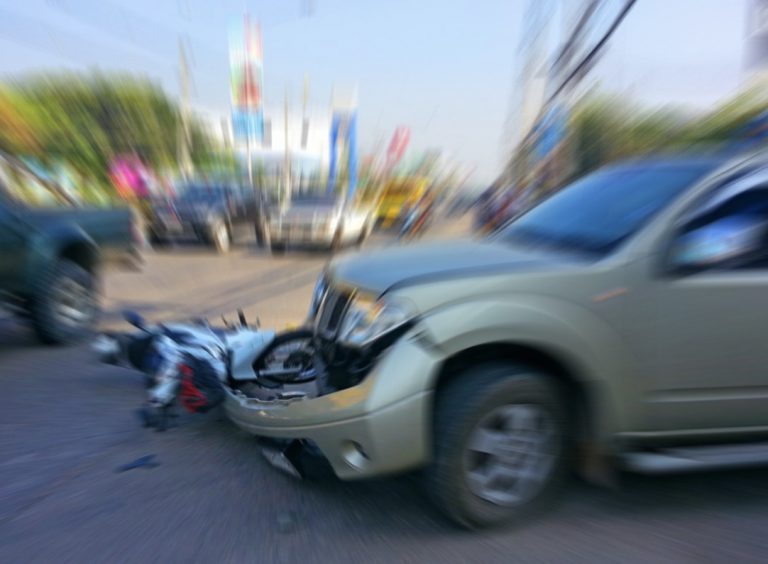It’s one of the biggest fears for many riders—being involved in a motorcycle accident. Often, factors like wet roads, blind spots, or inexperience mean that a bike accident can happen when you’re least expecting it.
Do you know what to do in case of an accident? As a responsible rider, you should understand how the accident process works, helping you take action quickly and get help for yourself and others in an emergency.
To learn more, keep reading to find seven important steps to take after a motorcycle accident—and why they’re important.
Story Stages
1. Call 911
Your first step after an accident should always be to get emergency help. Call 911 and let them know about the accident, giving them the exact location, if possible, and letting them know if you suspect others involved have been injured.
Police and emergency responders are sure to arrive as quickly as they can, so try to be patient—although accidents are frightening, help is on the way.
One thing you should never do is leave the scene of an accident. Not only is this against the law, but it’s irresponsible and you’ll need to speak with the police for their accident report before you’re able to leave.
2. Seek Medical Care
Even if you don’t think you have a motorcycle accident injury, you should still let paramedics check you out. Scrapes, bruises, and cuts are very common after motorcycle accidents, but they might be more serious than you realize, requiring stitches.
Internal injuries after an accident are also hard to see, so look after your health by ensuring you seek medical care.
If anyone has been seriously injured, make sure you know what hospital they’ve been taken to, so that you can notify their family.
You may need to also get additional follow-up care after the accident, so visit your family doctor if this is recommended to you by the paramedics.
3. Move to a Safe Location
After the accident, you’ll want to move the bikes or cars off of the road, if you can. This is because your vehicles are likely blocking the road, impeding traffic.
However, it’s also for your own safety, as standing on or near a road, especially at night, means it might be hard for other drivers to see you.
If the vehicles can’t be moved or are too damaged to drive, put out flares or lights to make it easier for other drivers to see as they approach.
4. Exchange Details With the Other Driver
Next, you’ll need to exchange details with the other motorcycle rider or driver. This is for insurance purposes, as your auto insurance provider will need to contact the other driver and their insurance company.
Make sure to give each other the make and model of your bike, license plate number, insurance policy number, and your full name and contact details.
Sometimes, tempers can run high after an accident, so both parties should try their best to remain calm and be polite to each other. If you feel intimidated or concerned about how the other driver is behaving, ask the police officer on the scene to help facilitate the conversation.
If anyone witnessed the accident, ask for their contact as well, as their testimony can be important in court.
5. Document the Damage
Before leaving the scene, you’ll want to document the scene. Use your phone to snap some photos and video of the accident scene. This is important for insurance purposes and in case the accident goes to trial.
Take detailed, clear photos of the damage to your motorcycle, the damage to the other vehicle, and any photos that demonstrate special circumstances—like heavy rain, damaged road signs, or confusing intersections.
6. Contact Your Insurance Company
As soon as possible, it’s helpful to call your insurance company and report the claim. Your insurance should cover the damages to your motorcycle and your medical bills, so the sooner you file your claim, the sooner you can get compensation.
Your insurance adjuster will talk you through the process of submitting your claim and will help you schedule an appointment to have your bike appraised. This lets the insurance company work out the number of repairs that need to be done.
If the repairs needed are more than the value of the motorcycle, then the bike might be written off as totaled. In that case, you’ll be paid out for the value of your motorcycle.
7. Hire a Motorcycle Accident Lawyer
Sometimes, it can be hard to work out who’s at fault after an accident. In these cases, the accident often goes to court, working out which party is responsible for the damages.
If your case is going to court, hire a local motorcycle accident attorney who can represent you. Court cases can be complex, so finding an experienced lawyer helps you get the best possible results.
Look for a local lawyer who specializes in motorcycle accidents and is well-regarded in the community. Then, schedule a consultation where you can meet to work out the details of your case and your legal strategy.
Stay Safe After a Motorcycle Accident
If you’ve been involved in a motorcycle accident, follow the steps above to protect yourself and get help. Anyone who rides a bike should be familiar with the steps as well, as motorcycle safety means being prepared for anything.
Hopefully, you’ll never be part of an accident, but if it does, take a few deep breaths, try to remain calm, and follow the guidance of police and EMTs. Before you know it, you’ll get your bike repaired and you’ll be back on the road.
Was this article helpful? If so, please keep reading for more informative content.
